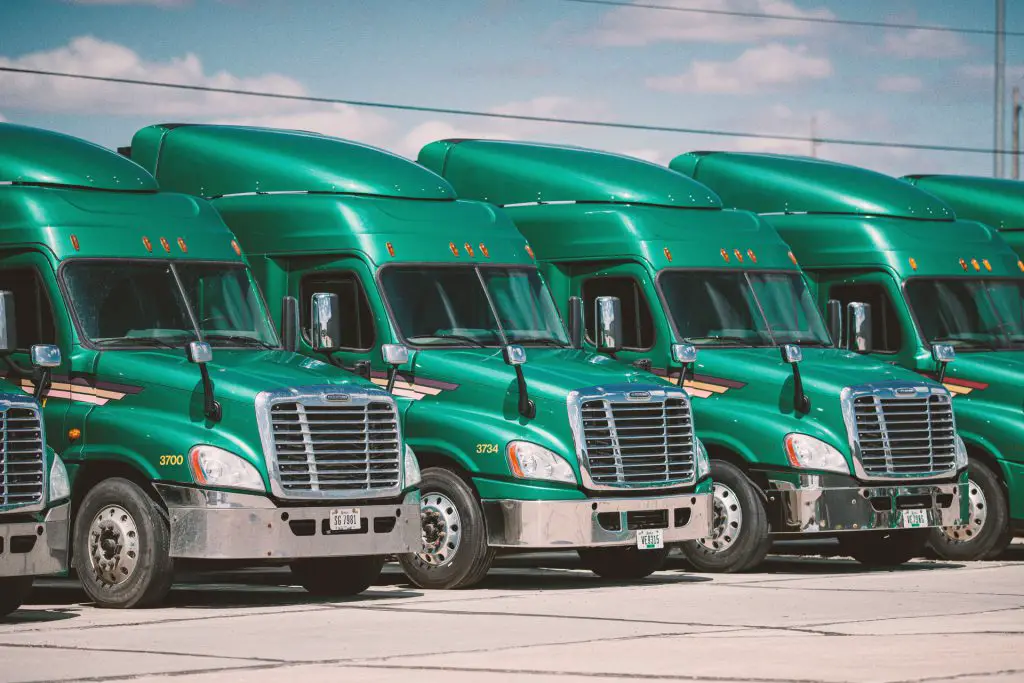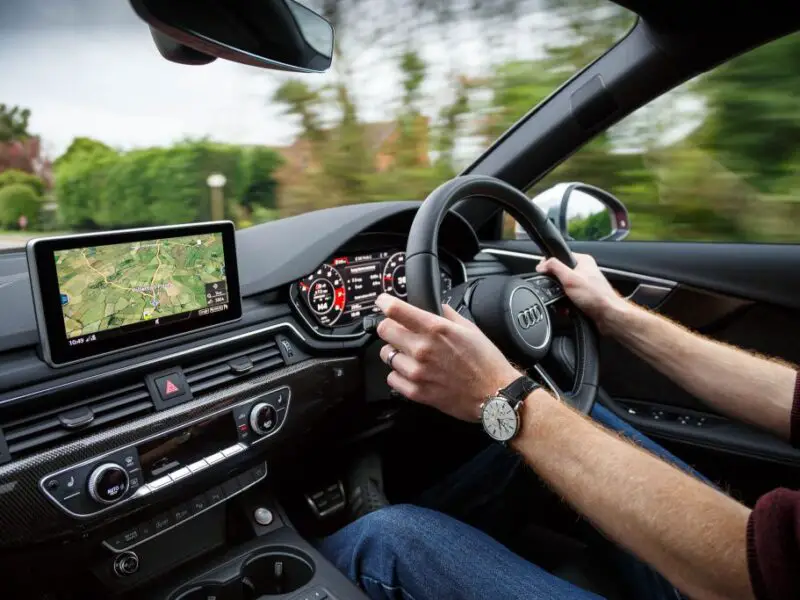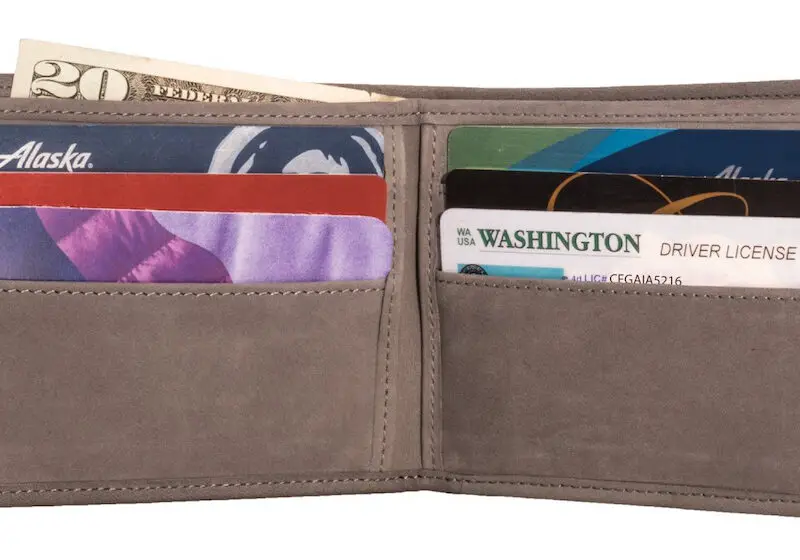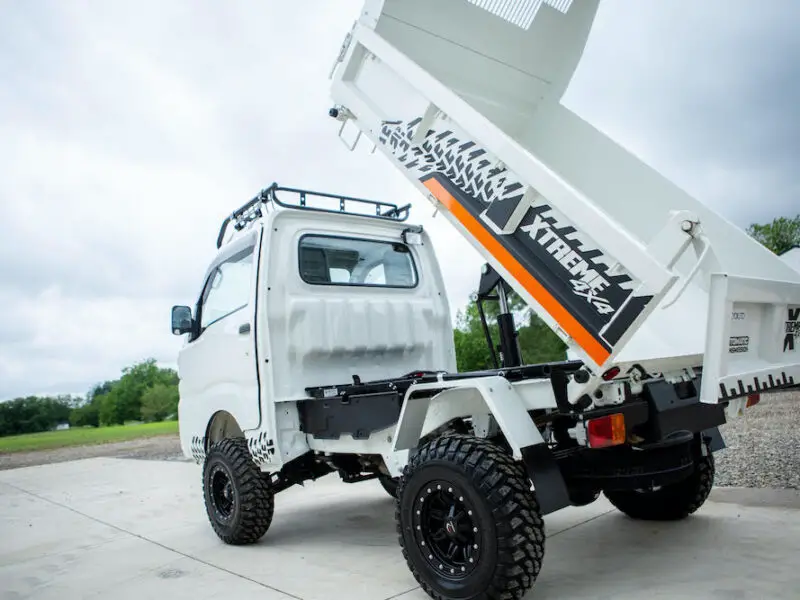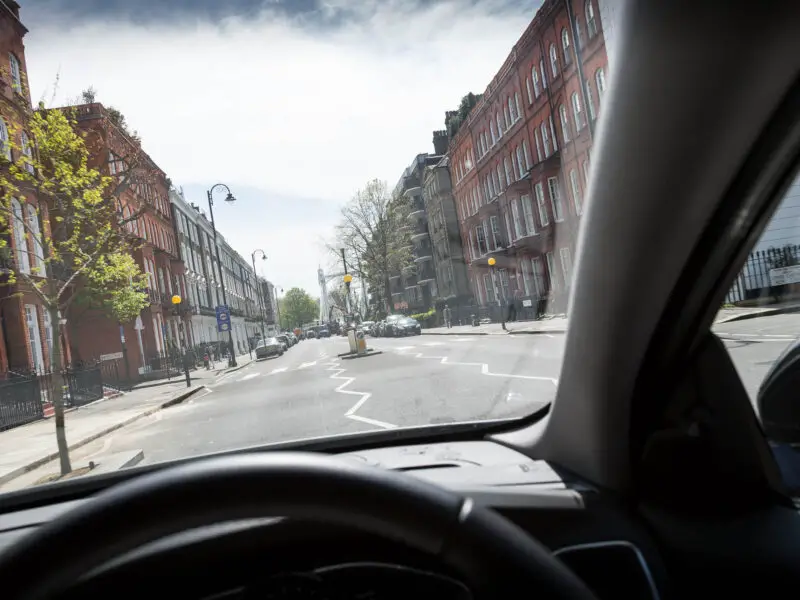The majority of drivers think of common two-door or four-door vehicles whenever the driving license comes to mind. But various types of licenses cater to the different vehicles that we see on our roads. But what class is a regular license?
Driver licenses will come in different classes which range from class A to class E. There are also special types of licenses namely MJ and DJ. The license requirements of drivers will also depend on the various states in the US varying slightly depending on the laws in each state.
This, therefore, means that a class D driver can tow a boat or trailer an RC for instance.
- CDL License
- Class C License
- Class A License
- Class B License
- Class D License
- Class E License
- Frequently Asked Questions
CDL License
The acronym CDL means commercial driving license. This is the type of license that you will need if you are to drive a commercial vehicle in the US.
If you have been wondering what class is a regular license, the CDL is very similar to a regular Class D license in that just like the noncommercial driving license, it is the state where the driver first tested for the CDL.
The CDL requirements are established by the federal government and expects that all the states will follow these guidelines. Different states will come with their standards which the applicant for the CDL license needs to follow to qualify for the driving license.
The standards are depended on the state.
That said there are also a couple of different commercial vehicles which to drive will require the driver to attain a CDL. A commercial vehicle can be considered one that is over 26000 pounds in weight or one that can transport 16 people or more counting the driver.
A commercial vehicle is also one that can haul very hazardous materials.
One thing you should probably keep in mind is that these commercial vehicles will be placed in different classes which will be based on the weight, function as well as the size of the vehicle.
There are two main types of CDL which include a class A and a class B. Each one of these will require the applicant to have specific skills and knowledge.
What Class Is A Regular License – The Endorsements
As far as each of the different CDL goes, the applicant or driver could also get several endorsements that enable them to operate certain specific vehicles or even use these vehicles in certain specific ways.
For instance, you will require endorsements if you want to operate the triple or double trailers. If you want to drive a bus, cars that have air brakes as well as vehicles that haul hazardous materials such as liquid or gases.
These endorsements will allow the drivers to be able to drive different types of vehicles. The driver can only earn these endorsements if they show certain knowledge or skills that test for a special endorsement.
On the flip side, let’s say the driver is unable to pass the exam or endorsement test or perhaps only gets an endorsement in one class of vehicle compared to another, then the driver could get a restriction on the CDL.
What Class Is A Regular License – The Commercial Learners Permit
After the driver has learned the type of vehicle that they are driving and the one that they would want an endorsement for the first thing that they shall get is a CLP or commercial learners permit.
A CLP lets the driver practice with a commercial vehicle. This means driving on public roads with a CDL-qualified driver next to them.
To get a CLP, one must pass the medical and knowledge tests which pertain to the specific type of commercial vehicle.
Furthermore, the driver will be expected to have the CLP for two weeks before they can even take the CDL skills test.
Some states will need the driver to complete the CDL training before they can go for the testing.
For the driver to qualify for a CDL, he or she must also excel in the general knowledge test all sections of the skills test as well as the endorsement tests.
Starting from 2022, applicants will be required to take entry-level driver training mainly from a recognized training provider. If you are wondering where you can find one simply access the FMCSA training provider registry.
What Class Is A Regular License – Losing The CDL… Is It Possible?
Whenever you are dealing with a class A or class B CDL you will be legally eligible to drive either a private vehicle or a noncommercial vehicle without the need for two separate driving licenses.
That said, in case the driver does an offense that will cause the revocation or the suspension of the driver’s license, the driver will end up losing all of the driving privileges. This will include driving a commercial vehicle.
Something to also note is that the CDL license will be valid for five years. The driver’s state will then renew the CDL after this time.
Class C License
To answer the question of what class is a regular license, the class C CDL is the most common CDL license type. This one makes it possible for drivers to drive vehicles that carry 24 passengers or less while counting themselves. This will also include single cars that are less than 26001 pounds as well as towing a load with a total weight of fewer than 20,001 pounds.
Understanding the class C CDL driving license:
- A driver who has a class C driving license will be able to operate the specific vehicles. These include:
- A vehicle with 2 axles that has a gross weight of fewer than 36000 pounds.
- A vehicle with 3 axles that has a gross weight of fewer than 6001 pounds.
- A car that has a length of 40 feet or less.
- A motorcycle with 3 wheels which has 2 well as in either the back or the front.
- A van that is designed to carry 10 persons or more but doesn’t exceed 15 people while including the driver.
According to the DMV website drivers that come with a class C license are also permitted to tow a single car that has a GVWR of fewer than 10,001 pounds.
Furthermore, such drivers can also tow a trailer coach as well as a first-wheel travel trailer with a total weight of fewer than 10,000 pounds.
Moreover, they can tow a fifth-wheel trailer with a gross weight of anywhere between 10,000 pounds and 15,000 pounds.
The class C license further allows one to drive vehicles with a GVWR of fewer than 26001 pounds whenever they are used for farm purposes.
Class C License Requirements
Many aspiring drivers wonder what class is a regular license and what are the requirements. There are several factors had requirements that you will need to meet if you are to qualify for a class C licensee.
It is a good idea for you to check your state’s requirements. Normally you will be required to pass a test that checks your normal driving abilities and driving knowledge.
You need to also pass the pre-trip inspection. This will qualify you for a general Class C driver’s license.
Furthermore, you may need to take the passenger transport to eat and hazmat test, and press test. You must take the time to prepare for the test for you to stand a chance of passing.
Class A License
Now we know that to drive a commercial vehicle or a truck you need to qualify for a CDL. Some states require that you get a class A license.
Note that the requirements for getting a class A driving license will be different in different states. You should therefore check the local laws if you are planning on applying for a CDL.
Different Categories Of The CDL
So is clear that the regulations and laws surrounding fig the CDLs will be different from state to state. In the majority of states, however, you will need a class A driving license if you are to drive a vehicle that is over 26001 pounds in gross weight as long as the vehicle towed is more than 10,000 pounds. The class A CDLs, let you drive the tractor-trailer across borders of different states.
Then there are the Class B CDLs which allow the driver to drive a single vehicle that has a gross weight of above 26001 pounds but not excessing 10,000 pounds. The driver however needs to only drive in the permitted or issuing state. These vehicles include busses dump trucks as well as delivery trucks that are within the state.
Coupled with understanding what class is a regular license, keep in mind that some states require a class C driver’s license for drivers of buses that carry 16 passengers or for vehicles that transport harmful chemicals.
How To Qualify For A Class A License
Let’s say you are looking to become a driver on interstate trucks, a large delivery van, or a bus. you must qualify for a CDL.
It is important to also be the often right age. This is to be over 18 years or 21 years old which will depend on the state.
It doesn’t matter the type of license that you chose that is unless you have been in the military or have previous employment. Otherwise, it is important to have proper training all while being under the guidance of a qualified instructor.
Furthermore, it is important that you pass both the road test skills as well as the written skills and you will also need to pay the right fees.
Class B License
If you want to operate and drive a vehicle that has a gross weight of 26001 pounds or even more, you will need a Class B CDL. This is also the type of license that you will require to tow 10,000 pounds with this type of vehicle.
A driver with a class B license can drive the following vehicles:
- buses
- trucks
- segmented buses
- utility repair vehicles
- dump and garbage trucks
- concrete trucks
Using the right endorsements a holder of the class B CDL will also be eligible for driving some class C licenses.
Class D License
Every state will classify the various type of categories of licenses differently. In certain states, there could be as many as 9 different categories. Other states will only have a few classifications of licenses.
Think of a class D license as a non-commercial and basic license. It is otherwise referred to as a standard driver’s license. This is the type of license that the majority of people will earn when they first learn how to drive a car such as teenagers.
To answer the question of which class of driving licenses is considered the ruler, this goes to Class D. Sure jumping to the middle of the queue comes across as a bit odd. But the class D license is the most common and the one you will find with, most drivers on the roads.
This means that acquiring a class D legally allows you to drive the majority of passenger vehicles. But what many people still don’t know is that a Class D license also allows you to drive trailers as well as tow vehicles as long as the total weight of the vehicle and trailer doesn’t exceed 10,000 pounds.
Across half of the United States, the Class D license refers or the basis of noncommercial as well as non-motorcycle licenses. Across states, the requirements and tests for qualifying for a class D driving license differ slightly.
Class E License
The class E driving license is twofold. It can either be a basic license one that qualified the driver to drive certain types of vehicles.
If the driver’s job requires them to drive, they may find that they need to upgrade their basic license to a class E. This could be to meet the requirements of the state.
That said it is not all states which will have a class E driving license. Those that do such as Georgia, Louisiana, Kentucky, New Jersey, and Missouri all tend to use it for slightly different reasons.
Think of a class E license as a license that allows the driver to operate trucks, vans, cars as well as other vehicles that are for noncommercial as well as commercial purposes.
In Florida, the standard license is a class E license. In other states such as New York class E is a specialized license,
When talking about the Class E license, the qualification allows drivers to operate trucks, cars, and vans as well as commercial and noncommercial vehicles.
The class E license allows the driver to drive passenger vehicles. This is as opposed to driving commercial vehicles. For vehicles such as tractors, trailers as well as big commercial motor vehicles as well as school buses.
The role of a class E license will be different depending on the state. The requirements for one to get a class E license will also be dependent on the state.
The drivers who want to apply for a class E driving license should contact the local DMV. This will allow them to access the relevant information on how to get one.
Class A Vs Class B
Whenever you are deciding on a CDL you should know the differences between them as far as training is conceded as well as the required knowledge depending on the class of CDL.
This is a crucial decision that will help one to determine the best CDL that you may want to train for.
Here you will be looking at three main types of CDL. These are classes A, B, and C.
The class A CDL is a universal license. It altos the driver to operate a variety of commercial trucks and tractor trailers.
The class B driving license will also let drivers operate a variety of vehicles. These include dump trucks and well as trucks. That said the class B CDL will limit the driver more than the class A CDL.
The different types of CDLs will come down to the type of car and the weight of the vehicle as well as the load which the vehicle will tow. For instance, you will need a special license if you plan on buying that truck together with a trailer for back-country travel adventures.
When it comes to the type of vehicles that Class A can drive, these should have a gross overall weight of 26001 pounds or above. They should also have a towing capacity of 10,000 pounds.
This type of CDL is more inclusive than the other classes of types which include tractor-trailers and 18-wheelers.
The class A CDL features endorsements. These allow the driver to drive multiple commercial trucks. This includes both class B and class C trucks.
Class A CDL Training
Depending on the type of training for a class A CDL will be different. There may be a need for both behind-the-wheel as well as classroom hands-on training. You also need training on federal as well as state regulations.
Students can also get to learn new technical skills. For instance, those that will instill safety skills when operating a class A vehicle.
The driver can also choose to apply for a class A CDL if they want to drive commercial vehicles.
What Is A Class B CDL
You will need a class B CDL if you plan on operating a single car with a total weight of 26001 pounds or even more while towing nothing more than 10000 pounds. The Class B vehicles will not often have a trailer.
With a class B CDL, you can drive a class C vehicle if you get the right endorsement. With a class C CDL you can operate the hazmat vehicles. You can also drive passenger vans and vehicles that are not class A or B.
Class B CDL Training
The training which you will get if you want to qualify for a class B CDL will be a combination between classroom as well as behind-the-wheel training.
The courses will be different which will depend on schedules as well as the program. That said they could include training requirements, maneuvering of the vehicle, trip report writing as well as general knowledge.
The training may also include driving o the public highways as well as on the range.
Furthermore, there would also be extra course work as well as extra training. This would include transporting cargo, vehicle inspections as well as general vehicle knowledge.
CDL Endorsements
There are endorsements that one can get depending on the type of CDL. A driver may require endorsements if they are to drive certain vehicles or if they want to transport certain vehicles.
The driver will need to pass endorsement tests to be able to drive certain vehicles. This could be triple or even double tractor trailers, hazmat, trucks, and school buses to mention a few.
The great thing with endorsements is that they have the potential of offering more opportunities. This will allow drivers to pull a larger variety of goods in the different vehicle types.
Permit Vs License
The permits will be temporary. On the other hand, the licenses will be permanent.
The driving permits will also require several inspections as well as safety regulations.
Frequently Asked Questions
What Is A CDL
This is a license that qualifies the driver to operate large vehicles which are for commercial purposes as well as driving vehicles towing hazardous material. These vehicles could include buses, trucks as well as trailers.
What Is A Class C License
The class C CDL allows the driver to operate any vehicle which isn’t in class A or class B. the vehicles should transport anywhere between 16 to 23 persons while also counting the driver.
What Is A Commercial Vehicle
This is a vehicle that is intended for carrying fare-paying passengers such as a bus or for business and commercial purposes such as tractors, vans, lorries, and pickup trucks can all be considered commercial vehicles.

